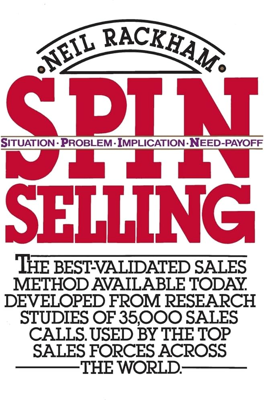Sales Behavior and Sales Success
Sales Behavior and Sales Success
Neil Rackham began his exploration into sales behavior while working with a Fortune 100 company's VP of sales who noticed a 30% shortfall in expected sales despite considerable investment in training and recruitment. Rackham's team utilized behavior analysis to observe sales calls and discern what behaviors correlated with success.
Key Findings:
- Closing Techniques: Contrary to the VP's expectations, successful sales calls involved fewer closing techniques than unsuccessful ones.
- Objection Handling: Top salespeople did not face more objections nor handle them better than their less successful colleagues.
- Probing Skills: The effectiveness of a sales call was not significantly influenced by whether salespeople used open or closed questions.
Rackham’s findings initially faced skepticism as they contradicted traditional sales training methods prioritized by major corporations. These traditional methods emphasized closing, objection handling, and probing (using open and closed questions) as essential for sales success.
Subsequent Research and Insights:
Post the initial findings, extensive research involving over 35,000 sales transactions led to the development of the SPIN selling technique, identifying more effective sales behaviors particularly useful in major sales contexts. This additional research also began to influence sales training programs for big corporations, moving them away from traditional methods.
Traditional vs. SPIN Selling in Larger Sales:
Traditional sales techniques, while sometimes effective in smaller, simpler sales, were found inadequate for complex, high-value sales: - Building Relationships and Perceived Value: In larger sales, building a robust perception of value and a strong relationship with the customer is crucial, as major sales often involve ongoing customer interaction post-purchase. - Investigating Needs: The SPIN (Situation, Problem, Implication, Need-payoff) method was developed as a more strategic form of probing, which involves: - Situation Questions: Fact-finding about the customer’s current context. - Problem Questions: Identifying difficulties the customer faces that the product can address. - Implication Questions: Discussing potential effects or consequences of the problems identified. - Need-payoff Questions: Having the customer explain the benefits of solving those problems.
Decomposition of a Sales Call: Rackham describes that regardless of scale, most sales calls can be broken into four systematic stages: 1. Preliminaries: Initial interactions to establish rapport. 2. Investigating: Key stage where probing (SPIN questions) happens to uncover and understand customer needs deeply. 3. Demonstrating Capability: Showing how the product or service can meet the identified needs. 4. Obtaining Commitment: Securing a customer commitment, which could be a range of actions leading ultimately to a sale.
Through his extensive research and practical application, Rackham provides a significant shift in sales training, focusing on larger sales and highlighting the limited effectiveness of traditional sales techniques in complex selling situations.
